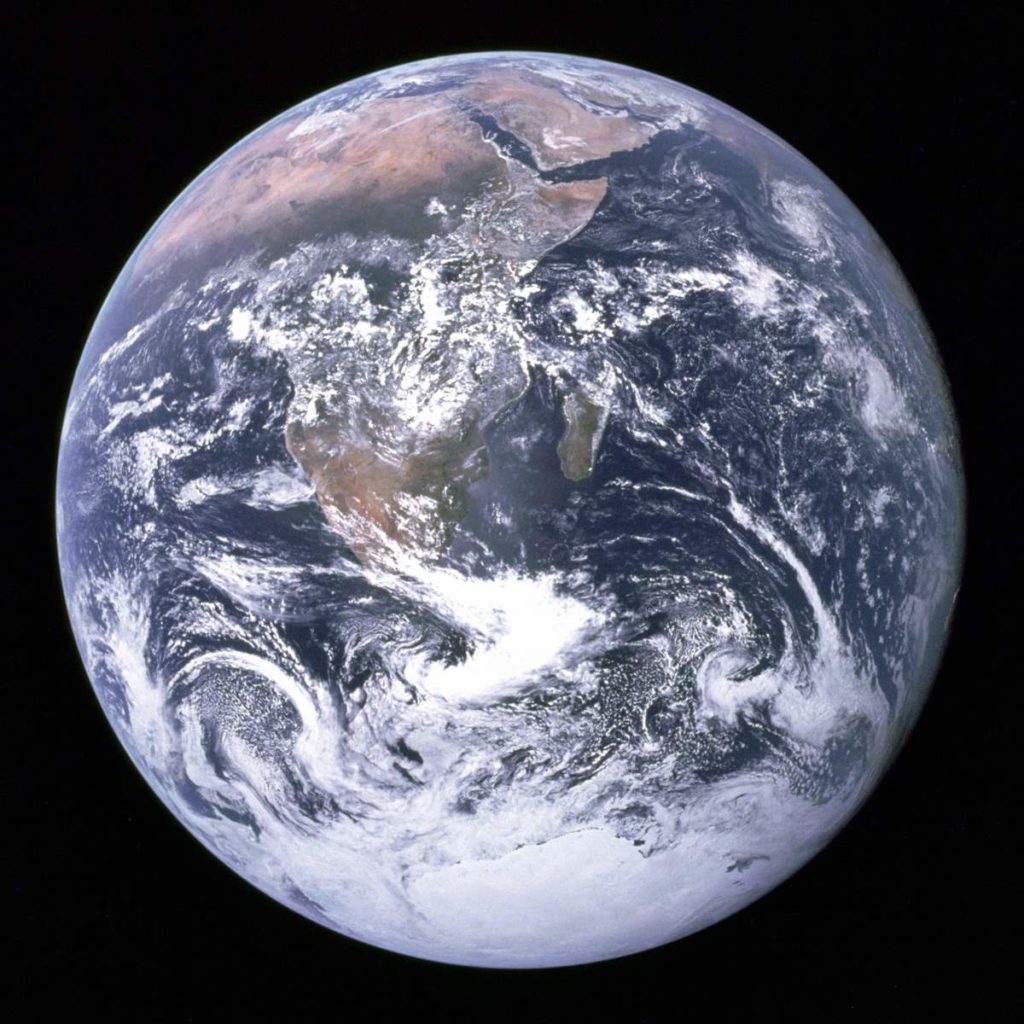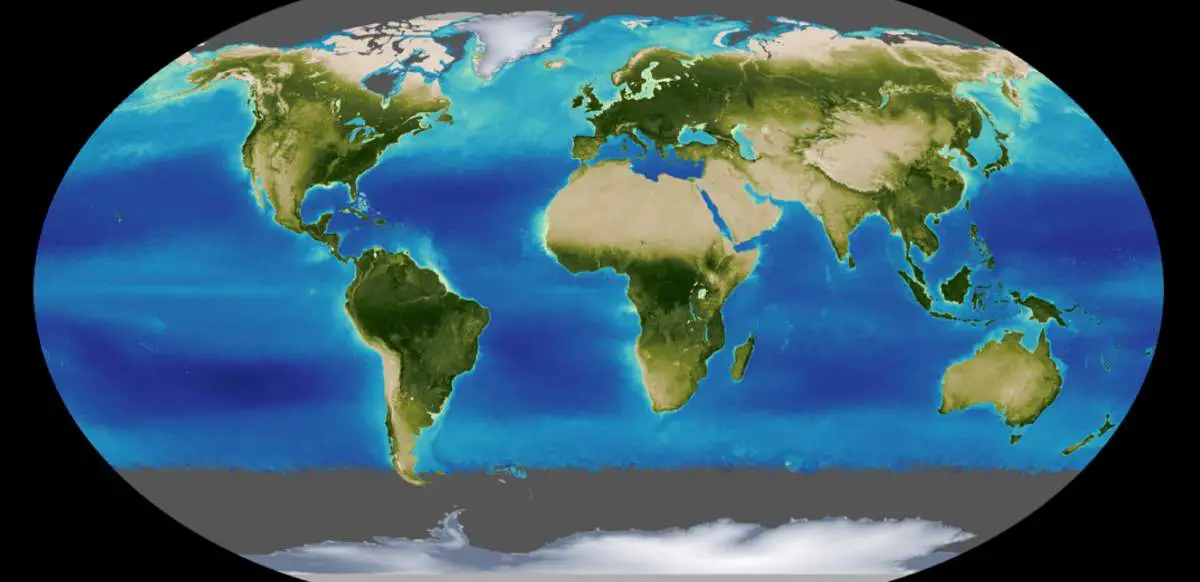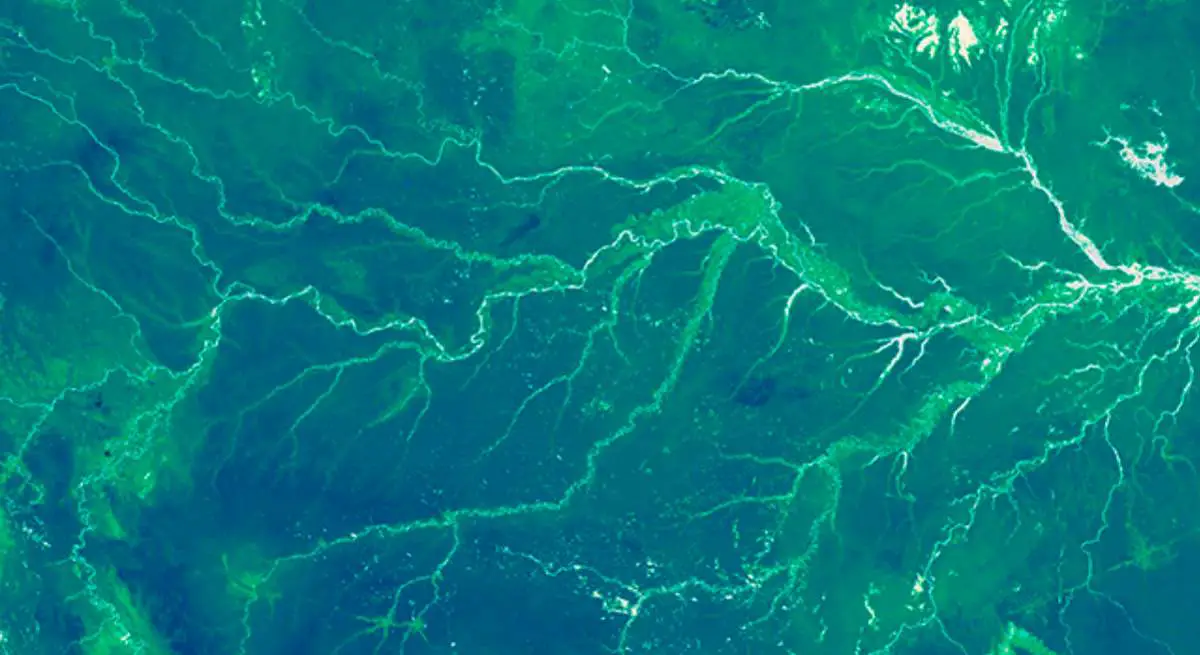NASA has published a video titled “Earth’s Biosphere: The Green Marble”, showing the monthly averages of land greenness (vegetation) and ocean chlorophyll. You can watch how the primary producers (plants and phytoplankton) transform the Earth’s landmasses and oceans over 12 months.
“Over the past 50 years, satellites orbiting Earth have unveiled a remarkably dynamic planet. Polar ice advances and retreats, storm systems come and go, and surface currents meander across the oceans. It turns out that even the pulse of life shows up.”
“Primary producers (see notes 1) (plant life and ocean phytoplankton – see notes 2) play an integral part of the Earth system; some would say that they drive the entire biosphere. Plants and plankton influence the composition of the atmosphere, play a part in the water cycle and regulate ocean chemistry. They also provide food for nearly all other life on the planet. And as the above images illustrate, Earth’s biosphere is anything but static. Plant growth on land fluctuates with the seasons; so does the blooming of phytoplankton-tiny plant-like organisms in the oceans.”
The Green Marble
“The green marble” is a reference to the “Blue Marble”, the famous Apollo 17 photo of Earth.

Notes
- Primary producers take energy from other organisms and make it the energy that is used. In almost all cases these are photosynthetically active organisms (plants, cyanobacteria, protists, and a number of other unicellular organisms). They make usable energy for themselves (and also for other organisms) by taking energy from non-living sources. Photosynthesis is a process used by plants and other organisms to convert light energy into chemical energy that can later be released to fuel the organisms’ activities (energy transformation). This chemical energy is stored in carbohydrate molecules, such as sugars, which are synthesized from carbon dioxide and water – hence the name photosynthesis, from the Greek φῶς, phōs, “light”, and σύνθεσις, synthesis, “putting together”. In most cases, oxygen is also released as a waste product.
- Phytoplankton is the autotrophic (self-feeding) component of the plankton community and a key part of oceans, seas, and freshwater basin ecosystems. The name comes from the Greek words φυτόν (phyton), meaning “plant”, and πλαγκτός (planktos), meaning “wanderer” or “drifter”.
Sources
- Primary producers on Wikipedia
- Photosynthesis on Wikipedia
- “Earth’s Biosphere: The Green Marble” on NASA Earth Observatory website
- Budget of NASA, Year by Year [1980-1989] - June 10, 2024
- Budget of NASA, Year by Year [1970-1979] - June 10, 2024
- Budget of NASA, Year by Year [1958-2024] - June 10, 2024

